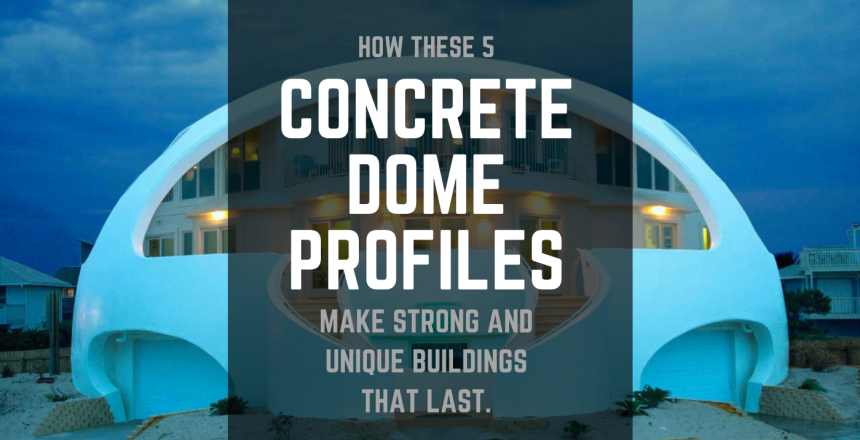Domes come in many different shapes and sizes, all with unique strengths and features. And the use you have in mind has a big impact on the concrete dome profile you should choose. From egg-shaped to low and expansive, these domes bring together beauty, functionality, and strength in perfect balance.
Why Are There Different Concrete Dome Profiles?
Concrete domes can serve many purposes. And each of those purposes has different needs within the structure. One of the greatest benefits of concrete domes is that they’re fully customizable, from their size and shape to the interior finish work.
This is why you’ll see concrete domes used for gypsum storage, luxury homes, and basketball arenas without changing the basic 5-step method needed to construct them. Grain storage, for example, needs a relatively high dome to maximize usable space while balancing it with strength. Meanwhile, a low profile dome is much better suited for an event center or church, maximizing floor space and keeping the ceiling close enough to add rigging for lights and sound systems.
Does the Dome Profile Change Dome Strength?
It’s an undisputed fact that concrete domes are the strongest and safest manmade structures on earth today. But when you change the profile of the dome, it can impact the strength of the structure.
While the half sphere provides the best balance between aerodynamic deflection of tornadic wind speeds and compressive capacity under pressure, low profile domes can suffer weaknesses due to the ratio between its diameter and the overall height of the dome.
Aerodynamics and Compression in Harmony
The strongest domes balance aerodynamics with compressive strength. The half sphere is the best example of this balance, offering compressive strengths of more than 4,000 pounds per square inch, which can take the pressure of 300-mile-per-hour winds in stride. But because of its aerodynamic shape, even these winds won’t be able to exert that much pressure.
Concrete Dome Profile Limitations
But when you increase the diameter-to-height ratio beyond 2:1 (the half sphere), the weight of the dome itself begins shifting from downward force on the foundation to outward force. Ratios up to 5:1 (20-foot height for a 100-foot diameter) maintain enough strength to be stable, but past that ratio the sides of the dome lose the ability to hold up the center of the dome.
That dome profile ratio is a critical part of building a facility that can handle its own weight. But as long as this simple rule is followed, any concrete dome will outperform any conventional building of the same dimensions.
5 Types of Concrete Dome Profiles
With every dome shape comes a specific advantage or purpose. The five most common types of concrete dome profiles listed below cover nearly any design need you may have.
Half Sphere Dome
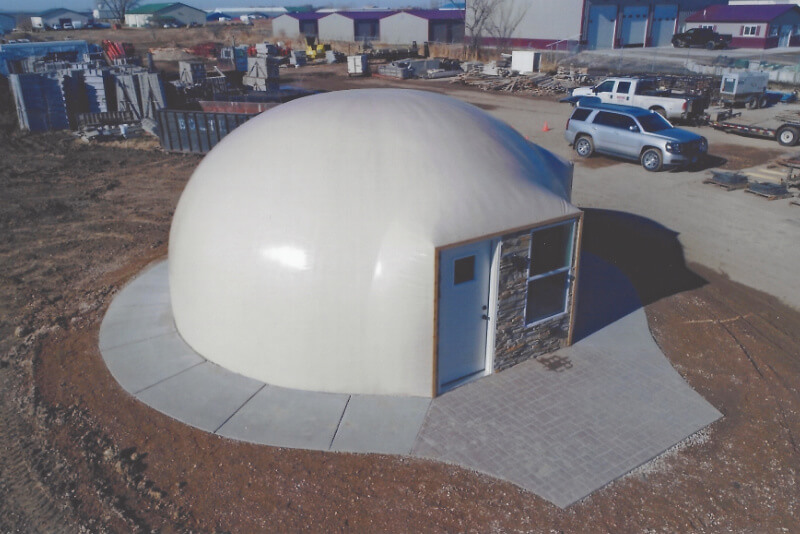
With a dome profile ratio of 2:1 (100-foot diameter and 50-foot height), this is the quintessential dome. The diameter bisects the sphere, creating an incredibly strong structure that works well for grain storage and homes alike. It also makes the most ideal shape for the top of silos and storage facilities.
Oblate Ellipsoid

This dome profile lifts the sphere slightly above its diameter, which provides a unique feeling inside the dome. This is the exact profile that Maui Ocean Center chose for their immersive Humpbacks of Hawaii experience, providing a nearly edge-free projection canvas that brings these incredible animals to life in the custom-built theater.
Tall Prolate Ellipsoid
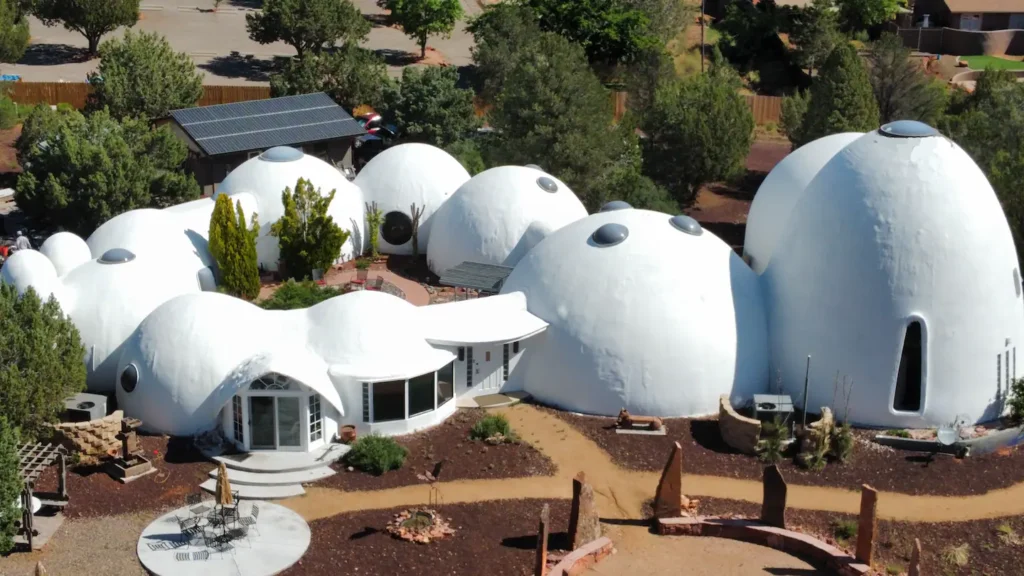
Homes like the Sedona Domes incorporated the tall prolate ellipsoid profile to create an open, airy, and spacious feel within their living spaces. But it’s also well-suited for adding additional floors to a home. The egg-shaped exterior looks a bit more extraterrestrial than other profiles.
Low Profile Dome
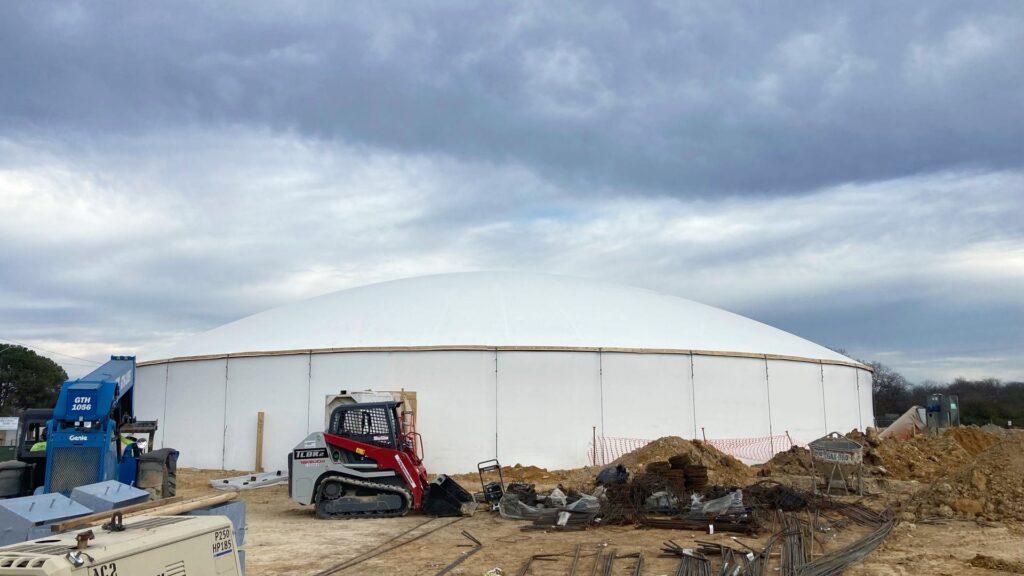
Moving in the opposite direction, low profile domes flatten the dome for a more conventional look. These domes function best as schools, event centers, and churches. They offer the most cost-effective use of materials for the floor space, and they provide a more convenient structure for added rigging. The large surface area also provides an exceptional thermal battery, reducing heating and cooling costs year-round.
Torus
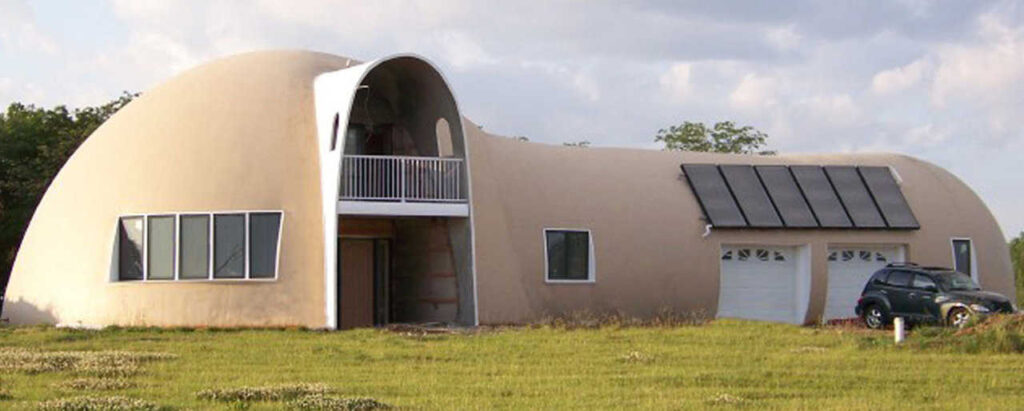
The PVC airform technology that makes domes possible can also be shaped into toruses. These “donut” profiles work perfectly for joining several dome structures together. A complete torus is possible as well, giving even more flexibility to the living spaces possible with domes.
Modifying Dome Profiles for Special Uses
But your concrete dome profile options don’t have to end with these 5 options. Domes can take on even more variations of these basic shapes, resulting in some of the most unique and beautiful buildings you’ll ever see.
Stem Walls
The most common modification for concrete dome profiles is the stem wall. These cylindrical bases lift the dome off the ground, giving a more familiar look to most dome buildings. For arenas and churches, this gives more usable space around the perimeters. For homes, stem walls allow builders to use conventional windows and doors without significant structural modifications. Stem walls can also add additional levels for living spaces.
Elongated Ellipsoids
By stretching the diameter in one direction, concrete domes can make better use of rectangular property lines. Many arenas and event centers utilize this unique shape, including the Mathena Family Events Center, but it’s also a brilliant design choice for homes. The Eye of the Storm is the most famous elongated ellipsoid dome, and it may also be one of the most beautiful domes ever built.
Modified Ellipsoids
A complete dome is the typical image we have when we talk about dome homes, but the most fascinating domes take liberties on this basic design. These modified ellipsoids give concrete dome profiles the ability to create open-air living spaces within the original dome profile.
From off-grid living in Colorado to beautiful mountain escapes in Hawaii, these modified domes give character to these homes in ways you would never expect.
Multiple Dome Structures
When you aren’t quite sure which type of dome to build, you could always go with a multi-dome home. A simple triple-dome home design gives you separate living spaces without the fuss of building loads of interior walls. But you can also go a bit further with domes connected by torus-shaped hallways. For warmer climates, this type of dome design opens up the possibilities for outdoor living spaces as well, a design choice utilized by the Sedona Domes in Arizona.
Which Concrete Dome Profile Is Right for You?
Regardless of the purpose you have in mind for your dome building, you can rest assured that our experts at KingDome Builders can help bring it to life. We’ll sit down with you to determine which concrete dome profile works best for your vision. Contact us today to get your project started with the strongest and most versatile buildings on earth.

